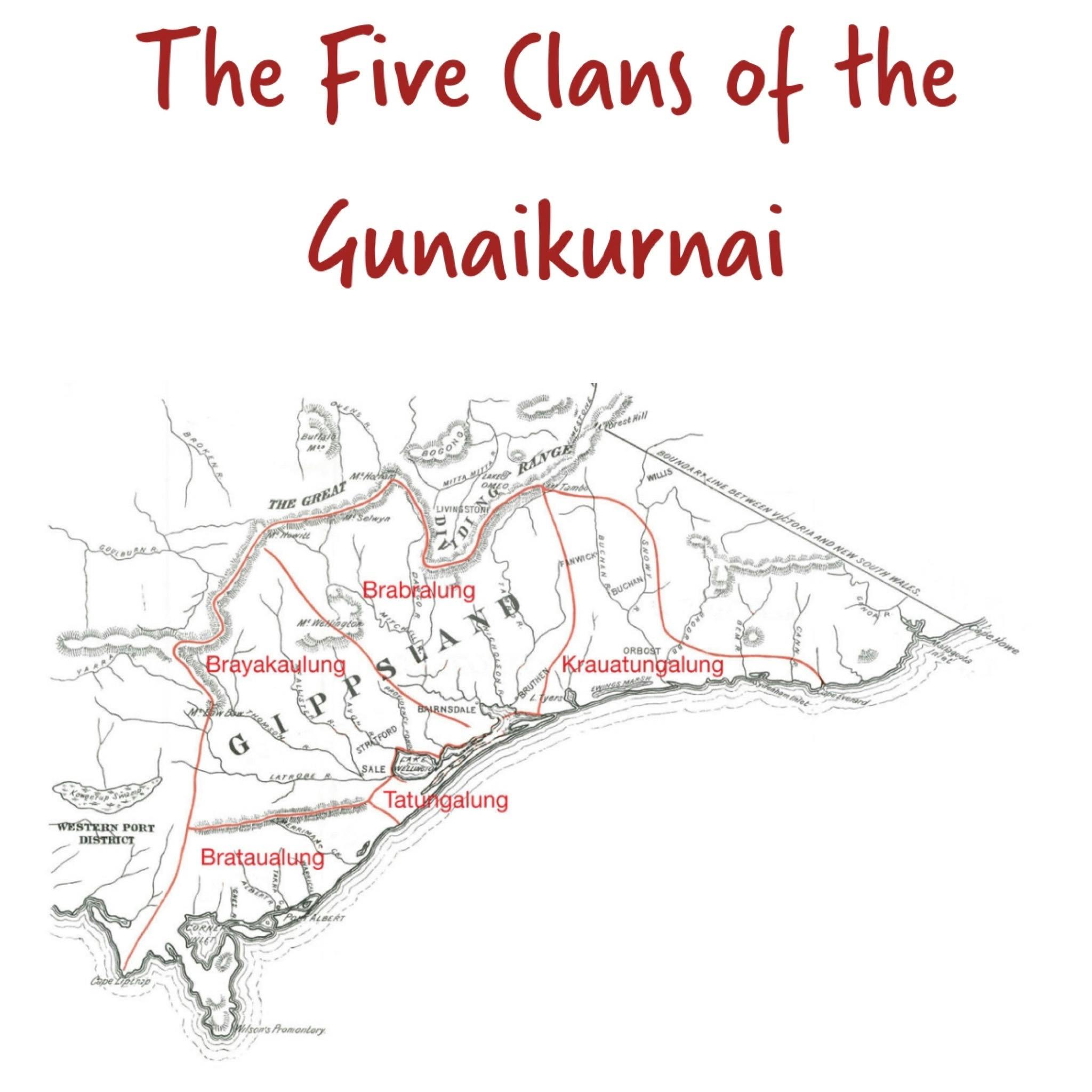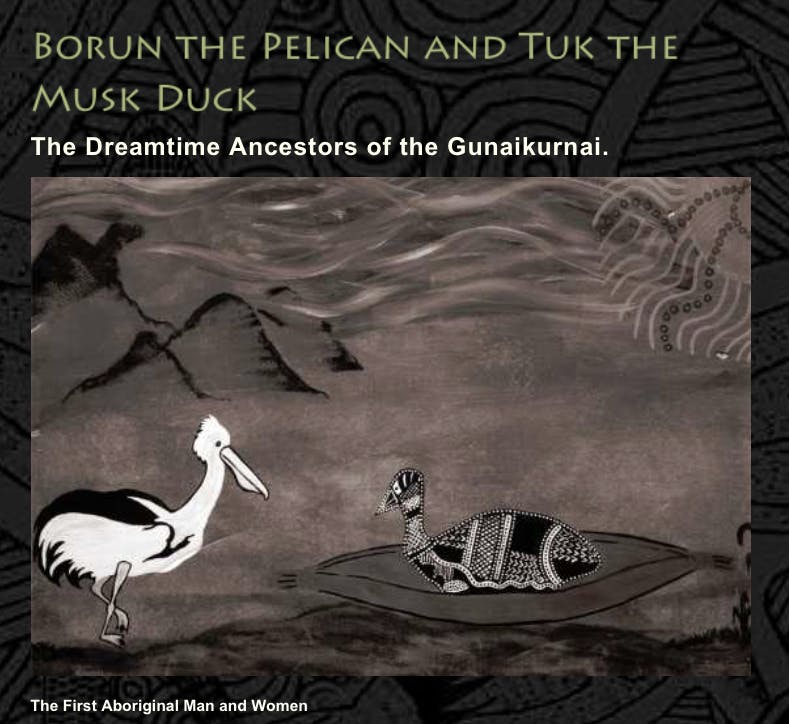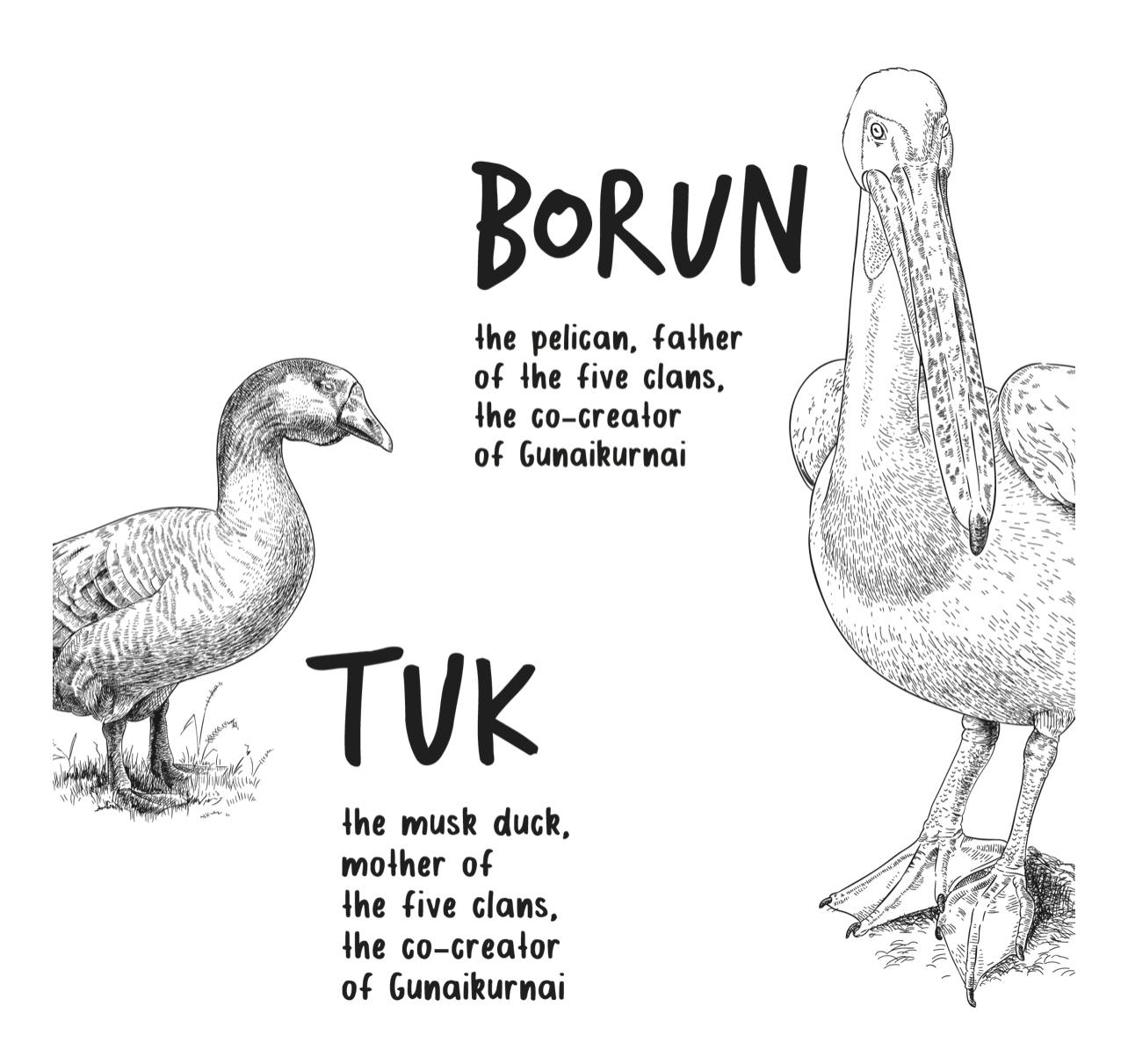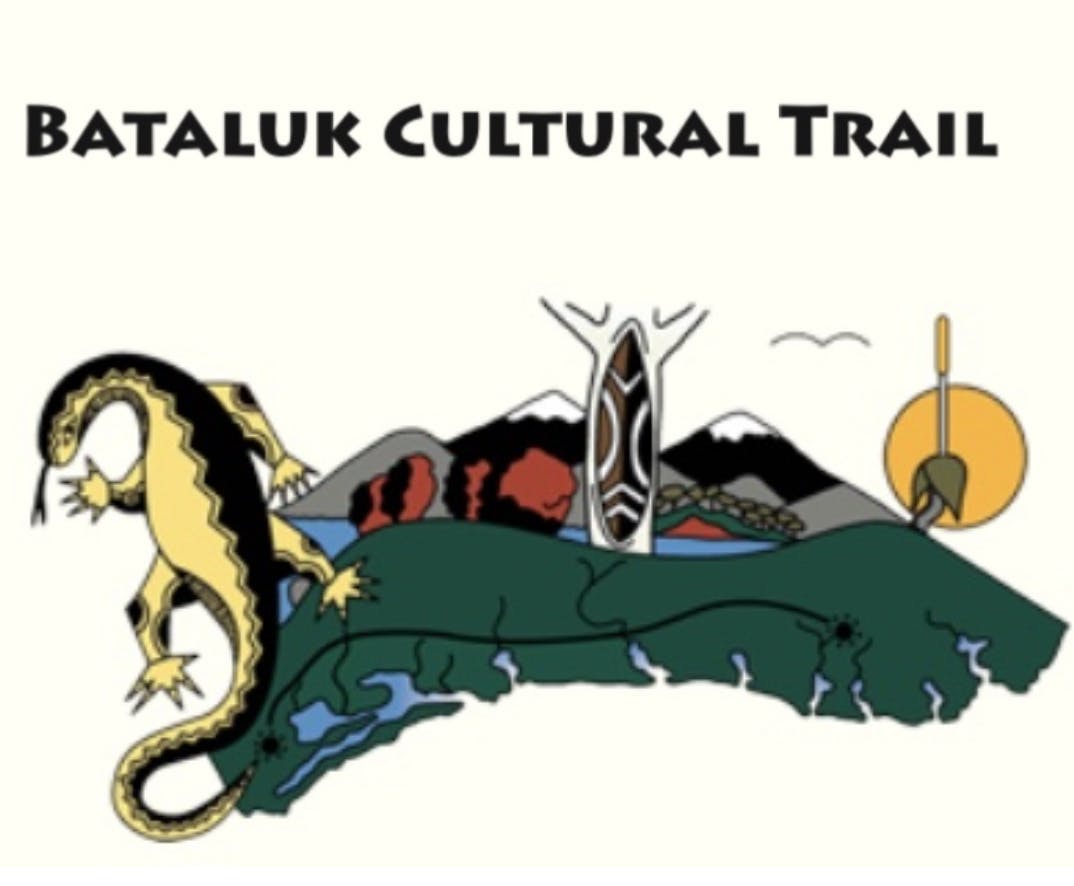Gunaikurnai



Traditional Owners - Gunaikurnai
The Gunaikurnai people are an Aboriginal Australian nation of South-East Australia. They are the Traditional Custodians of most present-day Gippsland and much of the southern slopes of the Victorian Alps.
There are approximately 3,000 Gunaikurnai people and five major clans that together form the Gunaikurnai Nation: Brataualung, Brayakaulung, Brabralung, Tatungalung and Krauatungalung.
This map shows the Traditional areas of the five Gunaikurnai clans as approximated by A.W. Howitt in the 1880’s.
The clans were divided into groups, each of which possesses a special name. In some cases the locality was named after the group, but for others they were named after the area.
Brataualung claim the country from Anderson Inlet to Latrobe River, to Cape Liptrap and teh southern watershed to the sea. Key locations include Tarrawarrackel (Port Albert), Kut-wut (Agnes River), Lurt-bit (Albert River) and Yiruk (Wilsons Promontory).
Gunaikurnai - Brataualung: The Story of The First Man and Woman
There was a time when the first Gunai, who was Borun the Pelican, came down from the mountains of the northwest and reached the level country.
He crossed the Latrobe River near Sale and continued his journey to Port Albert; he was alone carrying a bark canoe on his head. As he was walking he heard a constant tapping sound but, look as he may, he could not find the source of it. At last he reached teh deep waters of the in;et and put his canoe down. Much to his surprise, he saw a woman sitting in it.
She was Tusk the Musk Duck. He was very pleased to see her and she became his wife and the mother of all the Gunai.
Information provided by Culture Victoria and Gunaikurnai Land and Waters Aboriginal Corporation

The Port Albert Frog And The Whiterock
of Tidelek and Borun
Long time ago there lived this Giant Frog, whose name was Tidelek.
One day Tidelek was sick because he drank up all this water in the land.
The next day Tidelek felt a bit better but was feeling sad, for what he had done.
That day, Tidelek was walking along the shores of Port Albert thinking how he was going to release all this water back into the bay.
A mob of Gunaikurnai people and animals saw him slowly walking in the bay. They wander over to him and they asked him what was wrong. Tidelek said "I am still sick from drinking up all the water, can you help me free it".
The Gunaikurnai and animals put their heads together to think what to do? They all agreed to do something funny! The kangaroo went first and did a funny dance; everybody laughed except for Tidelek.
A Gunaikurnai man went second and told a funny story; everybody continued to laugh except for Tidelek. The Eel went third and got up on his tail to wriggle; Tidelek thought the wriggle looked funny and began to laugh, he laughed so hard all the water came flooding out of his eyes and mouth creating this flood of water that went back into the bays.
Many Gunaikurnai and animals drowned that were caught in the flood; some were stuck on marooned forming islands. Borun was a Gunaikurnai leader and a magic man who had the totem of a black pelican.
Borun went out to rescue the others and left his wife till last; when he returned she was gone; she left her possum skin cloak sitting on a log and standing up looking like it was her waiting for him. To avenge the death of his wife; Borun painted himself up with pipeclay and changed back to a pelican to fly off; he was frozen to stone as it was against traditional law for any animals to have traditional markings. Now all pelicans carry the white markings of the pipeclay which has made them now the colour of black and white. Borun now sits as a white rock in the catchments of Port Albert

Our Country and Our Culture
Gunaikurnai Land and Waters Aboriginal Corporation (GLaWC)
Our Country is the land, the rivers and the ocean, the people and the stories, the past and the future. All of it is connected. All of it is important to us. Country heals us and connects us to our ancestors, our culture and our history…
We have one of the oldest cultures in the world and that culture has been passed on through many generations. Our culture is embedded in our Country, which is vital to our identity. Our stories and songlines link us to our ancestors, who travelled across Country practising the customs that make us Gunaikurnai.